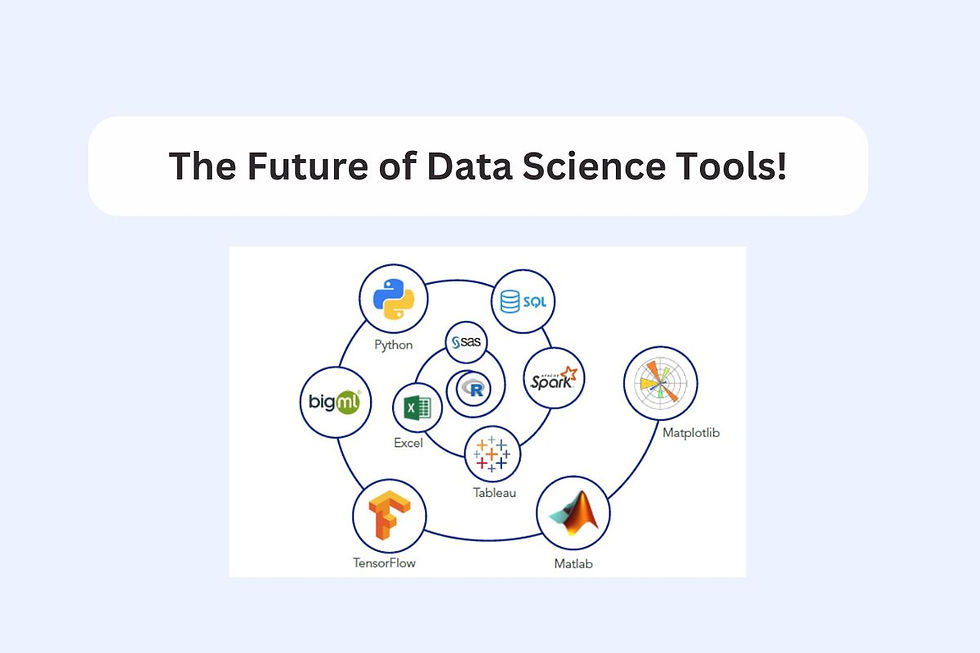8 Key Trends in Software Testing with Machine Learning
- archi jain

- Nov 18, 2024
- 4 min read

Software testing is a crucial aspect of the software development lifecycle, ensuring that applications meet quality standards and function as expected. Over the years, advancements in technology have changed the way testing is approached, and one of the most promising developments is the integration of Machine Learning (ML) into the testing process. This combination is transforming how tests are designed, executed, and optimized.
Key Trends in Software Testing with Machine Learning
1. Automated Test Generation
Traditionally, test cases are written manually, a process that is time-consuming and often prone to human error. Machine learning is streamlining this by automatically generating test cases based on patterns and behavior in the code. ML algorithms can analyze code and identify key areas that are more likely to contain defects, generating test scenarios to cover these areas.
Benefit: ML-based automated test generation reduces the effort required to create test cases, making the testing process faster and more efficient.
2. Predictive Text Analytics
One of the most powerful capabilities of Machine Learning is its ability to predict outcomes based on historical data. In software testing, this can be used to predict where bugs are likely to appear in future versions of the software. By analyzing previous test results, bug reports, and development trends, ML models can identify patterns that indicate areas of the software that may require more testing or are more prone to issues.
Benefit: Predictive analytics help teams prioritize testing efforts by focusing on the areas of the application that are more likely to fail, improving test coverage and reducing time spent on less critical parts of the software.
3. Test Optimization and Prioritization
In large-scale software projects, running every possible test scenario can be impractical due to time and resource constraints. ML models can be used to optimize and prioritize tests, ensuring that the most important and relevant tests are run first. Machine learning can analyze past test results and the current state of the software to determine which tests are most likely to reveal defects.
Benefit: This trend helps reduce test execution time while maintaining high test effectiveness, ultimately leading to faster release cycles without compromising software quality.
4. Visual Test Automation with Computer Vision
Manual testing often involves checking UI elements to ensure that everything is visually accurate and works as expected. Traditional automated testing can struggle with visual elements, especially when dealing with dynamic or responsive UIs. With ML-powered computer vision techniques, software testing can now include more advanced visual validation, such as detecting UI discrepancies, layout errors, and other visual defects automatically.
Benefit: Computer vision in test automation improves the accuracy of visual tests and reduces the need for human intervention, especially in UI-heavy applications.
5. Anomaly Detection in Test Results
In conventional testing, a failure is typically flagged when it deviates from expected outcomes. However, Machine Learning models can be trained to detect anomalies and deviations in test results, even if they don’t directly match predefined test expectations. This means ML can identify subtle issues or performance degradation that might not be immediately noticeable.
Benefit: This allows for more advanced monitoring and detection of issues that could otherwise go unnoticed, improving the overall quality of the software.
6. Self-Healing Test Scripts
Test scripts are often prone to breaking when the application changes, requiring manual updates to align with new UI elements or workflows. Machine learning can be applied to create self-healing test scripts, which automatically adapt to changes in the application without the need for manual intervention. These scripts use machine learning to recognize changes in the application and adjust test steps accordingly.
Benefit: Self-healing scripts save time by automatically updating themselves in response to changes, reducing the maintenance effort and improving the reliability of automated testing.
7. Performance Testing and Load Prediction
Performance testing often involves testing the application under various load conditions to identify potential bottlenecks or performance degradation. ML algorithms can analyze system behavior under different load conditions and predict the system’s performance under future loads based on past data. This can help identify potential performance issues before they become critical.
Benefit: Performance testing with ML improves accuracy in predicting system behavior under various load conditions and helps optimize the infrastructure to handle potential traffic spikes.
8. Enhanced Test Reporting and Metrics Analysis
Machine Learning can also improve the way test results and metrics are analyzed and presented. By using ML-powered analytics, testing teams can gain deeper insights into the effectiveness of their testing processes. For example, ML models can identify trends and correlations in test data, highlight areas that are more prone to failure, and suggest improvements for future tests.
Benefit: Enhanced reporting leads to more actionable insights, allowing teams to make data-driven decisions on improving test coverage, effectiveness, and overall software quality.
Conclusion
The integration of Machine Learning into software testing is revolutionizing the way testing is approached, providing faster, more efficient, and smarter solutions. From automated test generation to self-healing test scripts and predictive analytics, ML is making software testing more intelligent and less reliant on manual efforts. By embracing these trends, organizations can improve the quality and reliability of their applications while reducing the time and cost associated with manual testing processes.
To stay ahead in this rapidly advancing field, consider enrolling in the Best Software Testing Training in Noida, Delhi, Gurgaon, and other locations in India. These training programs are designed to equip you with the latest skills in software testing, including the integration of Machine Learning for smarter, faster, and more efficient testing.








Comments